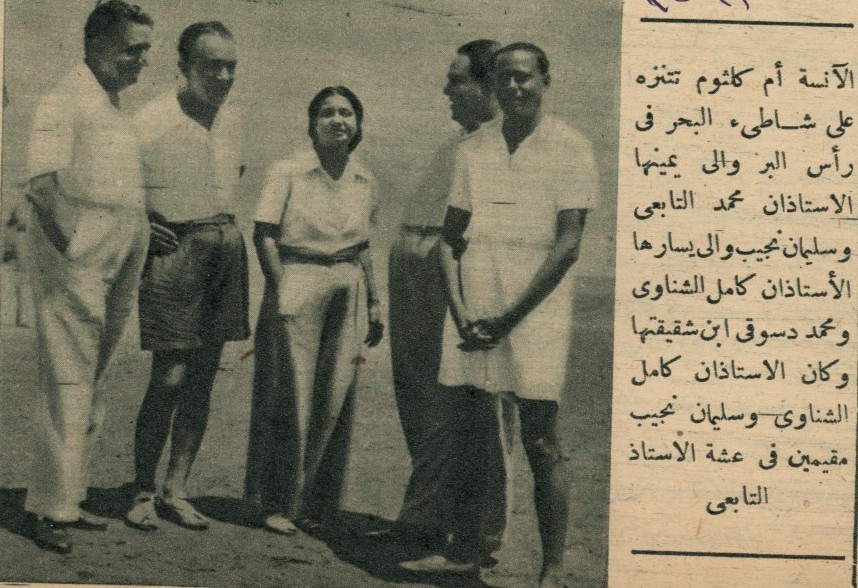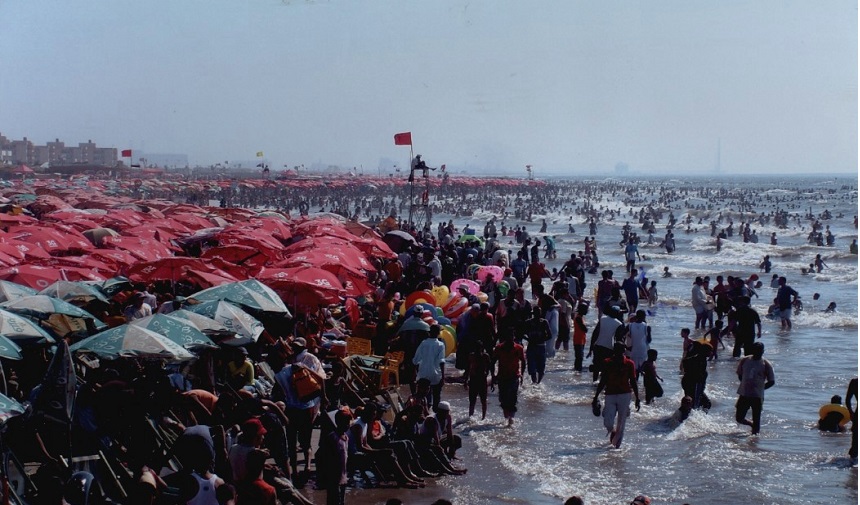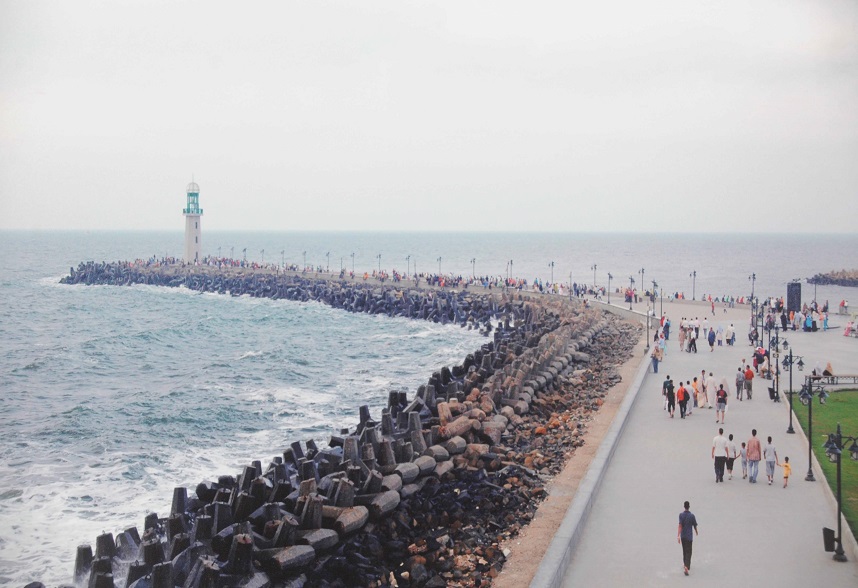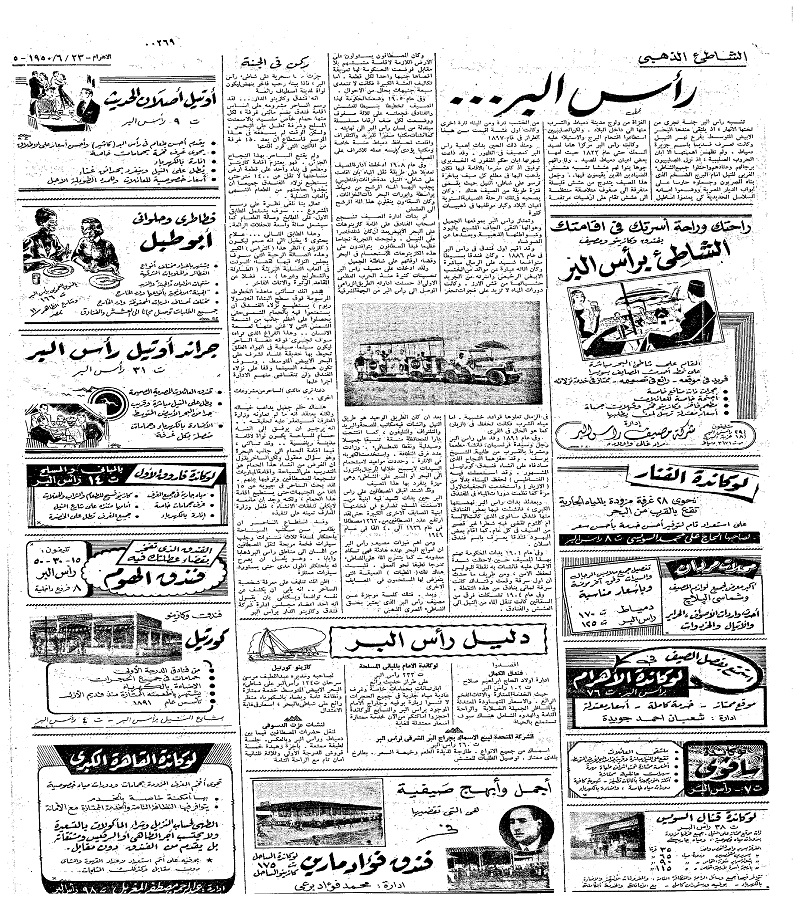
##
You know it is summertime when you get a sun stroke in the shade, when you can’t breathe from the smoke of grilled corns yet you grab yourself one, and when the street noise is on until midnight despite the frequent power cuts. Welcome to summer in Egypt, where jasmine necklaces are your road companions in the heat, along with handmade kites that linger in the horizon defying gravity.
The way Egyptians see it, the summer is “officially” split into occasional pre-summer coastal visits and the summer vacation. Pre-summer times are dominated by traditional ways to combat the heat – such as rolling carpets and folding rugs away to sprinkle the ground with cooling mazahr (water infused with floral essence). In the evening, balconies metamorphose into living rooms with rounds of lemonade pitchers, radio sets on and two people – always – playing backgammon; the rest are busy planning the family’s summer vacation. Watermelon slices are often to be found in such settings.
Summer vacations mean a lot to Egyptians. In Galal Amin’s famous book Whatever Happened to the Egyptians, he dedicates an entire chapter to the topic. “Tasyif, the term denoting summer holidaymaking, specifically implies that the holiday is spent by the seaside; Egyptians even have a special noun for people who spend the summer in this way: mustafin […] As well as a word for summer breeze, bahari, literally meaning the breeze that comes from the direction of the sea.”
Amin reveals how the summer holiday season was much longer in the past. The concept of weekends did not exist. It was a long leave of absence that involved “a copious number of suitcases and trunks, and perhaps even mattresses, blankets and the like,” read the book that highlights the fact that, pre-1952 Revolution, the government itself moved its headquarters and main offices to Alexandria at the beginning of every summer and returned to Cairo at its end.
Pre-1952 Revolution Al-Montaza Palace was the royal summer residence, and its neighbouring Alexandria beaches were open to the public. Post-revolution, both the palace and beach were open to the public. As the royal elite fled the scene, Amin explained, the revolution generated its own elite, who created new cabins and beaches in Al-Montaza area as a little privilege of their own. Over the past 50 years, fashionable Egyptian summer beach resorts have been shifting, with a general westward direction: first Agami, then Marina and now all that have come to follow.

##
The star of the orient, Umm Kulthoum, taking a stroll with her friends on Ras Al-Barr beach
Back in the days, however, the seaside presented only two main attractions in the summer: Alexandria and Ras Al-Barr.
Ras Al-Barr, or the golden beach -- as Al-Ahram newspaper referred to it in a focus article published in 1950 -- is the meeting point of the Nile River with the Mediterranean Sea, in the Damietta Governorate. A small fishing town on the tip of the Nile Delta, it was once the crusaders’ gateway to Egypt. Until 1823, Ras Al-Barr remained one of Damietta’s key fishing spots, until in 1886, the town’s elite decided they liked the place and proceeded to create the beach huts that have lent the location a large part of its fame. The novelty soon picked up, eventually becoming Khedive Tawfik’s favourite summer resort too, along with his entourage. In 1886 Ras Al-Barr saw her first hotel and, in 1901, the government added it to its plan of summer vacation facilities to attract holidaymakers.

##
Artist Rawhia Khaled and her friends in Ras Al-Barr
Ras Al-Barr became then became the hype of upper-middle-class vacation makers, while celebrities – including diva Umm Kulthoum and composer Mohamed Abdel-Wahab -- often held concerts there, as well as spent their summers.
Over the years, the golden beach began to lose its glimmer and, by the early 1930s, the government launched its brand new project: the beach of Marsa Matrouh, to which then prime minister Ismail Sedqi Pasha flew by plane to inaugurate the first phase of its beach resorts.
Meanwhile, Ras Al-Barr had become accessible to lower-middle-classes, which in turn prompted the elite to leave the golden beach behind as they headed back to Alexandria and Egypt’s northern coast. Since the 1990s, substantial governmental efforts have focused on reviving Ras Al-Barr and restoring its former status.

##
Famous Ras Al-Barr beach huts

##
Late prime minister El-Noqrashi Pasha taking a walk in Ras Al-Barr

##
Ras Al-Barr beach in the late nineties

##
Ras Al-Barr beaches

##
Al-Ahram's special edition on Egypt's new ‘Golden Beach: Ras Al-Barr’ , Courtesy of Al-Ahram Organisation and Information Technology Centre (Microfilm)
All Photos courtesy of Al-Ahram digital Archive
Short link: